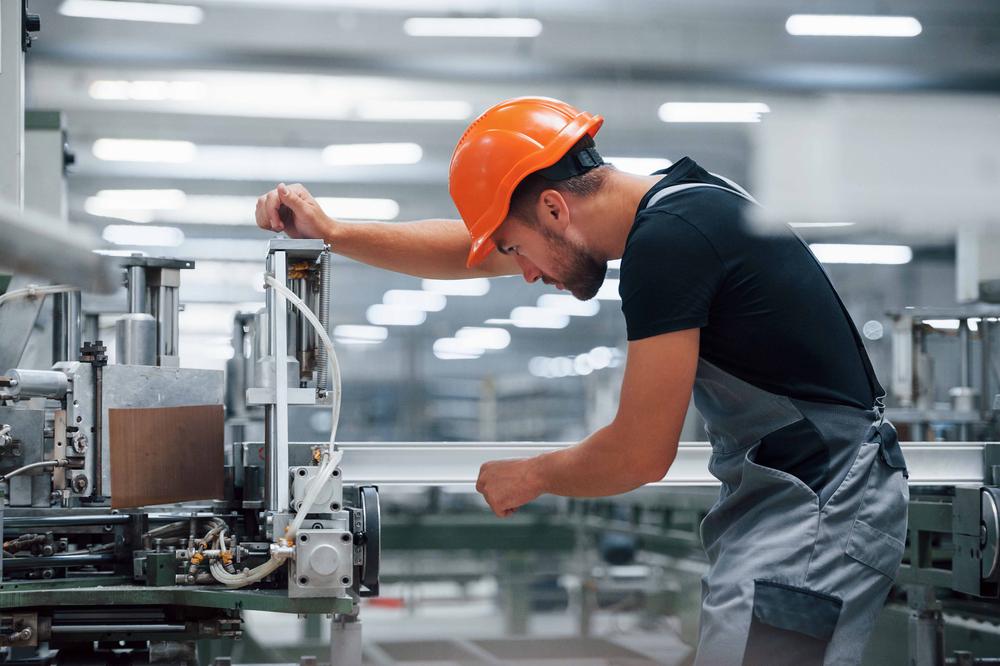
The B2B platform for the best purchasing descision. Identify and compare relevant B2B manufacturers, suppliers and retailers
Close
Filter
Result configuration
Continents
Select continent
Locations
Result types
Company type
Select company type
Industries
Select industry
Company status
Select company status preset
Number of employees
Min.
Max.
Founding year
Me-Sep
Krakow, Poland
B
1-10 Employees
2018
Key takeaway
Me-Sep is an innovative research and engineering company that specializes in membrane technology, offering solutions for membrane production, module manufacturing, and the construction of separation systems for gas and liquid mixtures. With over 15 years of experience, Me-Sep provides custom-made machines and high-quality raw materials essential for the membrane industry.
Reference
Core business
Membrane technology development • Me-Sep R&D Company
Innovative R&D company providing membrane technology solutions: membrane production, module manufacturing, construction of separation systems.

MEMSEP FILTRATION LIMITED
Havant, United Kingdom
A
1-10 Employees
2012
Key takeaway
Memsep Filtration Ltd specializes in providing advanced filtration and separation solutions, particularly through their innovative products designed for various applications, including pharmaceutical and semiconductor industries. Their expertise in filtration technology and commitment to high-quality manufacturing positions them as a valuable resource for membrane separation needs.
Reference
Product
Capsule Filter – MEMSEP FILTRATION LTD.

Air Liquide Advanced Separations
Newport, United States
B
11-50 Employees
2019
Key takeaway
Air Liquide Advanced Separations (ALaS) specializes in advanced membrane separation technology, offering innovative solutions that support the energy transition and deep tech. With a diverse product portfolio and a commitment to membrane innovation, ALaS has developed commercial applications for air separation and hydrogen.
Reference
Core business
Membrane Technology | Air Liquide Advanced Separations
The Most Diversified Membrane Product Portfolio in the Industry
Looking for more accurate results?
Find the right companies for free by entering your custom query!
25M+ companies
250M+ products
Free to use
MEMBRANE CONSULTANCY ASSOCIATES LIMITED
Pangbourne, United Kingdom
A
1-10 Employees
-
Key takeaway
Membrane Consultancy Associates specializes in membrane technology for liquid separations, offering expertise in identifying and assessing plant performance related to capacity and product quality. Their focus on membrane separation positions them as key experts in water treatment and filtration.
Reference
Core business
Membrane Consultancy Associates – Experts in the use of membranes for water separation and filtration
Imtex Membranes
Mississauga, Canada
A
11-50 Employees
2007
Key takeaway
Imtex's Permylene membrane separation technology offers a groundbreaking solution for olefin extraction and purification in the petrochemical and refining sectors, serving as a high-performance alternative to traditional distillation methods.
Reference
Core business
Home — Imtex Membranes
MTR
Newark, United States
B
101-250 Employees
1982
Key takeaway
MTR specializes in membrane separation solutions tailored for petrochemical plants, refineries, and gas processing facilities, emphasizing efficiency and a reduced carbon footprint. Their systems are custom engineered and produced in a certified facility, ensuring high-quality membrane-based separation systems.
Reference
Core business
MTR | Membrane Separations for Industrial Processes
SELIGENDA
Rende, Italy
B
1-10 Employees
-
Key takeaway
Seligenda Membrane Technologies specializes in innovative membrane-based crystallization systems designed for the recovery of biomolecules, including Active Pharmaceutical Ingredients and proteins. Their development of custom polymeric membranes facilitates efficient separation processes, positioning them as key contributors to advancements in membrane-assisted purification methods.
Reference
Core business
Seligenda - Membrane Technologies

MICRO-MEMBRANE SYSTEMS LIMITED
Radstock, United Kingdom
A
1-10 Employees
2003
Key takeaway
The company provides specialized services for membrane system operators, addressing issues like membrane fouling and low product flowrate. Their offerings include on-site membrane cleaning, intensive module regeneration, and system redesign to enhance output and product quality.
Reference
Core business
Membrane Process Services - specialist services for membrane system operators
On site membrane cleaning, offsite intensive module regeneration, supply and fitting of membrane modules. Ultrafiltration unblocking and flux restoration. Service and spares
Separations Analytical Instruments
Hendrik-Ido-Ambacht, Netherlands
A
1-10 Employees
1989
Key takeaway
The company offers a comprehensive range of instrumentation and services for various chromatography techniques, which may include applications relevant to membrane separation. Their expertise in purification and analysis further supports advancements in separation technologies.
Reference
Product
Products - Separations Analytical Instruments
UniSieve
Zurich, Switzerland
A
1-10 Employees
2018
Key takeaway
UniSieve Ltd offers advanced molecular separation membrane solutions that enhance feedstock purification and enable efficient gas separation. Their membrane technology is designed for diverse applications, including carbon capture in waste-to-energy and cement plants, addressing key challenges in sustainability and cost-effectiveness.
Reference
Core business
Gas Separation Membranes | UniSieve
Better separation – cleaner gasses. Swiss universal molecular sieving membranes for innovative gas separation.
Technologies which have been searched by others and may be interesting for you:
Membrane separation is a process that utilizes semi-permeable membranes to separate substances based on their size, charge, or chemical affinity. This technology is widely used in various industries, including water treatment, food processing, and pharmaceuticals, due to its efficiency and ability to operate without the need for extensive chemical additives. In membrane separation, a feed solution is passed through a membrane, allowing certain components to pass while retaining others. This selective permeability enables the separation of particles, ions, or molecules, resulting in purified output streams. The process can effectively remove contaminants, recover valuable products, or concentrate desired substances, making it a versatile solution in modern separation technologies.
Membrane separation is a process that utilizes selective barriers to separate components in a mixture based on size, charge, or affinity. In industrial settings, this technology is commonly applied in water treatment, food processing, and chemical manufacturing. The membranes act as filters, allowing specific molecules or ions to pass through while retaining others, which enhances efficiency and reduces the need for chemical additives. The operation usually involves applying pressure or concentration gradients across the membrane, facilitating the movement of desired substances. For example, in reverse osmosis, water is forced through a semi-permeable membrane, effectively removing contaminants and producing purified water. This method is highly efficient and allows for continuous operation, making it a preferred choice in various industrial applications.
1. Microfiltration
Microfiltration is a membrane separation technique that utilizes membranes with pore sizes ranging from 0.1 to 10 micrometers. It effectively removes suspended solids, bacteria, and larger molecules from liquids, making it ideal for water treatment and clarification processes.
2. Ultrafiltration
Ultrafiltration employs membranes with smaller pore sizes, typically between 1 nanometer and 0.1 micrometers. This technique can separate macromolecules, colloids, and some viruses, and is commonly used in wastewater treatment and dairy processing.
3. Nanofiltration
Nanofiltration membranes have pore sizes of approximately 1 nanometer, allowing for the removal of divalent ions and larger organic molecules while permitting monovalent ions to pass through. This technique is beneficial in water softening and in the food and beverage industry.
4. Reverse Osmosis
Reverse osmosis is a high-pressure membrane separation process that removes a wide range of contaminants, including salts and small organic molecules, through a semi-permeable membrane. It is widely used for desalination and producing purified water.
5. Forward Osmosis
Forward osmosis utilizes osmotic pressure differences to draw water through a membrane, leaving behind dissolved solutes. This technique is gaining traction in water treatment applications due to its lower energy requirements compared to reverse osmosis.
6. Electrodialysis
Electrodialysis utilizes an electric field to drive ions through selective ion-exchange membranes. This technique is effective for desalination and the removal of charged contaminants and is often used in brackish water treatment systems.
1. Advantages
Membrane separation offers several benefits, including high efficiency in separating components based on size or charge. This technology often requires lower energy consumption compared to traditional separation methods, making it cost-effective. Additionally, membrane systems tend to have a smaller footprint, which is ideal for facilities with limited space. They also generate minimal waste, promoting sustainability in various applications.
2. Disadvantages
Despite its advantages, membrane separation has some drawbacks. Membrane fouling can occur, leading to reduced performance and requiring regular maintenance to clean or replace membranes. Furthermore, the initial capital investment for membrane systems can be significant, which may deter some users. Lastly, not all substances can be effectively separated using membranes, limiting their applicability in certain processes.
Membrane separation technology is widely utilized across various industries due to its efficiency in separating substances.
1. Water and Wastewater Treatment
This industry employs membrane separation for purifying water and treating wastewater, ensuring compliance with environmental regulations.
2. Food and Beverage
In this sector, membrane processes are used for concentration, clarification, and separation of valuable components, enhancing product quality and shelf life.
3. Pharmaceutical
Membrane separation is crucial for the purification of active ingredients and the removal of contaminants, ensuring the safety and efficacy of pharmaceutical products.
4. Chemical Processing
This industry utilizes membrane technology for separating and recovering valuable chemicals, improving overall process efficiency and sustainability.
5. Energy
Membrane separation is increasingly applied in the energy sector, especially in natural gas processing and hydrogen production, to enhance energy recovery and reduce emissions.
Some interesting numbers and facts about your company results for Membrane Separation
| Country with most fitting companies | United States |
| Amount of fitting manufacturers | 6918 |
| Amount of suitable service providers | 6006 |
| Average amount of employees | 1-10 |
| Oldest suiting company | 1982 |
| Youngest suiting company | 2019 |
20%
40%
60%
80%
Some interesting questions that has been asked about the results you have just received for Membrane Separation
What are related technologies to Membrane Separation?
Based on our calculations related technologies to Membrane Separation are Industrial Electroplating, Industrial Filtration, Industrial Sintering, Industrial Extrusion, Industrial Handling
Which industries are mostly working on Membrane Separation?
The most represented industries which are working in Membrane Separation are Other, IT, Software and Services, Biotechnology, Manufacturing, Oil, Energy and Gas
How does ensun find these Membrane Separation Companies?
ensun uses an advanced search and ranking system capable of sifting through millions of companies and hundreds of millions of products and services to identify suitable matches. This is achieved by leveraging cutting-edge technologies, including Artificial Intelligence.